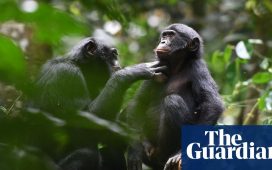Cows, pigs and other farm livestock in Europe are producing more greenhouse gases every year than all of the bloc’s cars and vans put together, when the impact of their feed is taken into account, according to a new analysis by Greenpeace.
The increase in meat and dairy production in Europe over the past decade has made farming a much greater source of emissions, but while governments have targeted renewable energy and transport in their climate policies, initiatives to reduce the impact of food and farming on the climate have lagged behind.
In 2018, the latest year for which accurate data is available from the UN Food and Agriculture Organization, livestock on EU farms (including the UK) were responsible for the equivalent of about 502m tonnes of carbon dioxide a year, mostly through the methane they release. That compares with 656m of carbon dioxide from Europe’s cars and vans in the same year.
But when the indirect greenhouse gas emissions are calculated, using established methods to estimate the deforestation and land use changes associated with growing animal feed, then the total annual emissions are equivalent to 704m tonnes of carbon dioxide. The calculations are set out in a new Greenpeace report entitled Farming for Failure, published on Tuesday.
The EU’s meat and dairy production rose by 9.5% between 2007 and 2018, which according to Greenpeace translated into an increase in annual emissions of 6%, or about 39m tonnes. That would be the equivalent of putting 8.4m new cars on the road.
If such rises continue, the EU has little chance of meeting its obligations to reduce greenhouse gases under the Paris agreement. Last week, the EU strengthened its targets on cutting emissions, announcing a target of 55% cuts by 2030, compared with 1990 levels, as part of the European green deal, and ahead of key UN climate talks next year.
Marco Contiero, agriculture policy director for Greenpeace, said policymakers must get a grip on livestock emissions, or face missing carbon reduction targets. “European leaders have danced around the climate impact of animal farming for too long,” he said. “Science is clear, the numbers as well: we can’t avoid the worst of climate breakdown if politicians keep defending the industrial production of meat and dairy. Farm animals won’t stop farting and burping – the only way to cut emissions at the levels needed is to cut their numbers.”
Halving intensive animal farming would cut about 250m tonnes of carbon dioxide emissions a year, about the same as the total emissions from the 11 lowest-emitting countries in Europe.
Greenpeace is calling for an end to public subsidies for industrial-scale animal farming under the EU’s common agricultural policy, as part of the bloc’s plans for a green deal. Such a policy is unlikely to win much favour from the powerful farming lobbies in most large European countries, but policymakers will be under pressure to show how they can meet the EU’s climate targets without large-scale reforms to farming.
Sign up for the Animals farmed monthly update to get a roundup of the best farming and food stories across the world and keep up with our investigations. You can send us your stories and thoughts at animalsfarmed@theguardian.com






